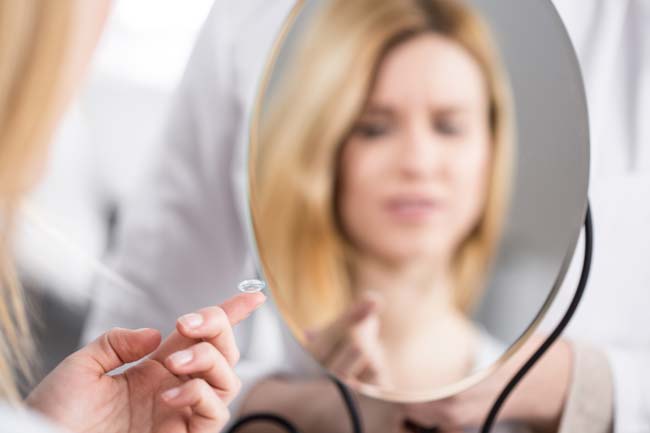Whether you’re an old pro at wearing contact lenses to correct your vision or are just getting started, there are a few tricks of the trade you need to know.
Believe it or not, contact lenses have been in use since the late 1800s. Those first contact lenses were made of glass and covered the entire surface of the eye. Can you imagine putting a glass lens in your eye every day?!
Over the years, contact lenses have greatly evolved — and today, millions of people wear them. Today’s contact lenses are made of plastic, and there are many types available.
While contact lens use is generally safe, it’s important to take proper care of the lenses and use them correctly. Not practicing good habits can put you at a greater risk of eye infection or other problems.
And the majority of people don’t use them the right way. A recent study from the Centers for Disease Control and Prevention found that almost 90 percent of people wearing contacts don’t properly care for them.
Let’s look at a few best practices when it comes to wearing contact lenses:
- Clean them and store them safely. Wash your hands before removing your contact lenses from your eyes or putting them in your eyes.Follow the cleaning and storing routine recommended by your eye doctor. When cleaning, gently rub your contact lenses with your fingers and then rinse them with solution before storing them in your case.
Always — yes, always — use fresh contact lens solution when storing your contacts.
You should also regularly replace your contact lens case. The American Academy of Ophthalmology recommends replacing cases at least every three months. Most stores offer multi-packs of contact lens cases for sale, making this an easy step to implement.
- Follow guidelines for contact lens solution use. Check the expiration date on your solution and make sure it isn’t expired.When you’re traveling, take along the full-size container of solution or purchase a travel-sized container of solution. Don’t try to pour a small amount of solution into a travel size container on your own — doing so can contaminate the solution.
When pouring out solution into your hand or the case, don’t allow the nozzle of the bottle to touch any surface. Doing so can also affect the sterility of the solution.
- Remove contacts when in water. If you’re swimming or in a hot tub, you should remove your contact lenses.
That’s because your lenses can be exposed to viruses, dangerous microbes and chemicals, particularly in a pool or hot tub. In fact, a condition called Acanthamoeba keratitis, which can cause permanent vision loss, is associated with wearing contact lenses while swimming.
It’s best to simply remove lenses beforehand to avoid contamination.
- Take them out before sleeping. While some contacts are “approved” for wear overnight, it’s a good idea to take them out anyhow. According to the CDC, sleeping with your contact lenses in makes you up to eight times more likely to experience an eye infection. That’s because oxygen to the cornea is cut off while you sleep, and germs are allowed to build up in the eye.
Even if you don’t experience an eye infection, wearing your lenses while sleeping can make you more likely to have dry or irritated eyes. Be sure to ask your doctor about any questions you might have on contact lense wear and lifestyle. He or she may be able to provide additional information specific to your needs.
If you think you may have an infection caused by contact lenses, make an appointment with your primary care physician. Don’t have a primary care physician? Find one here.







